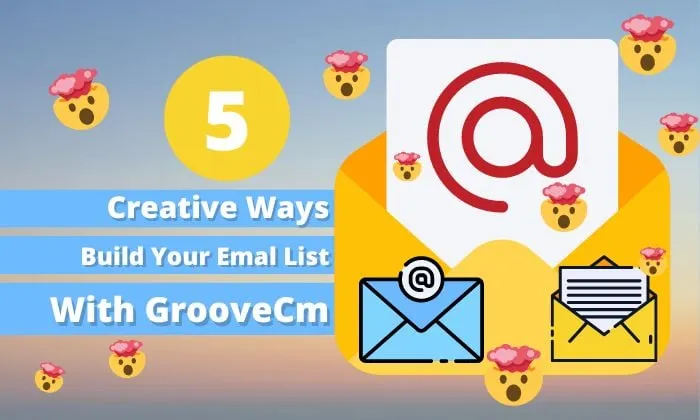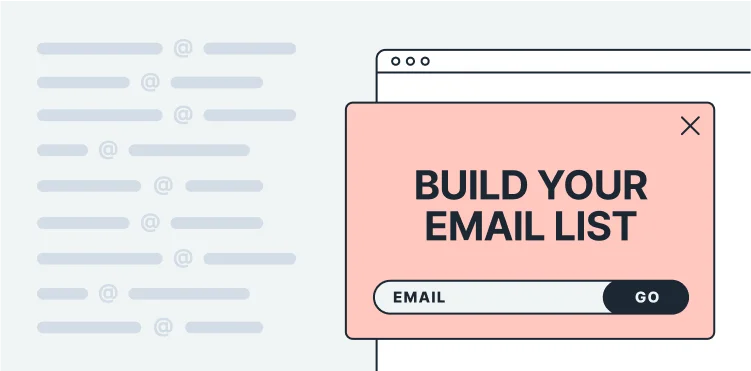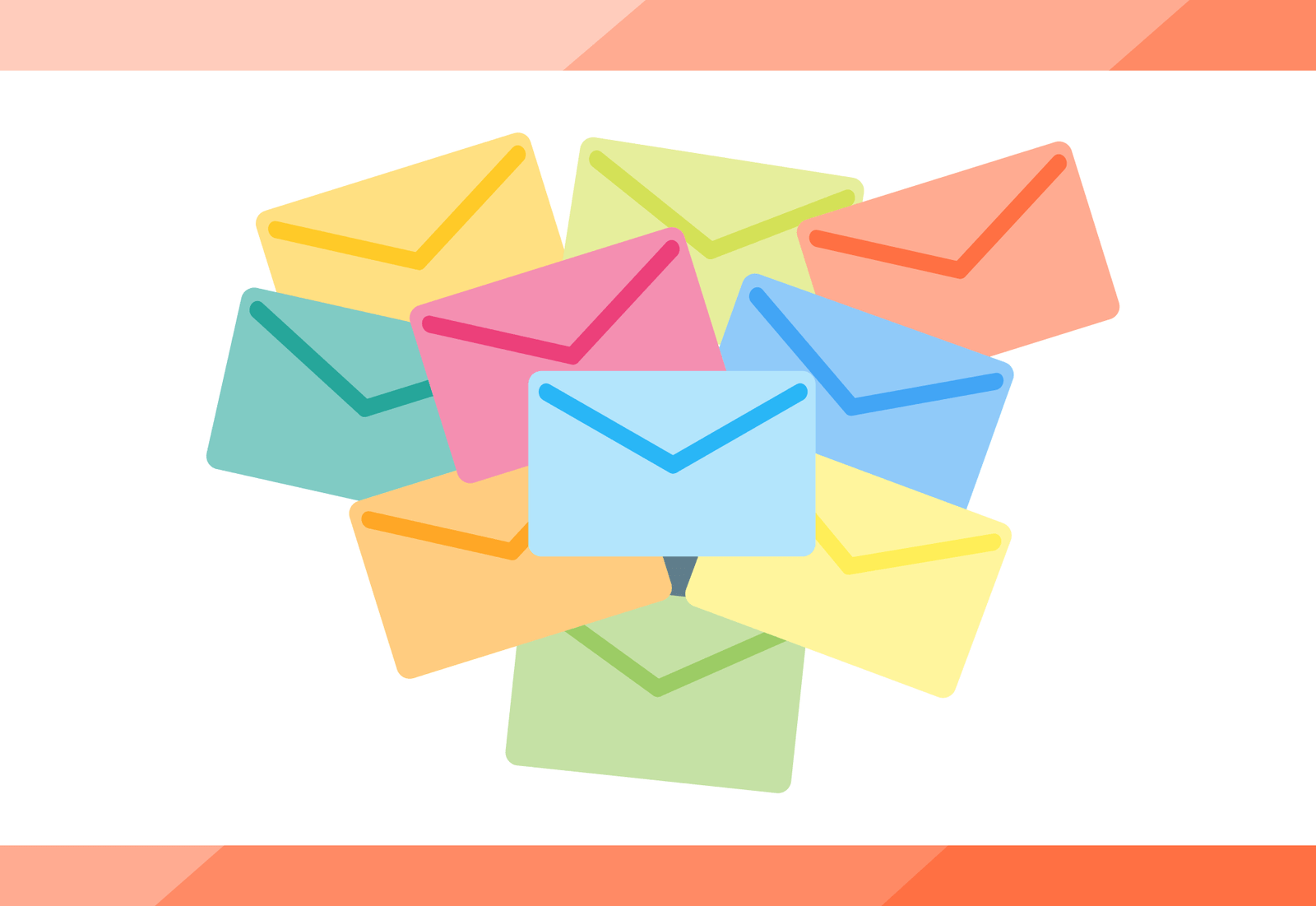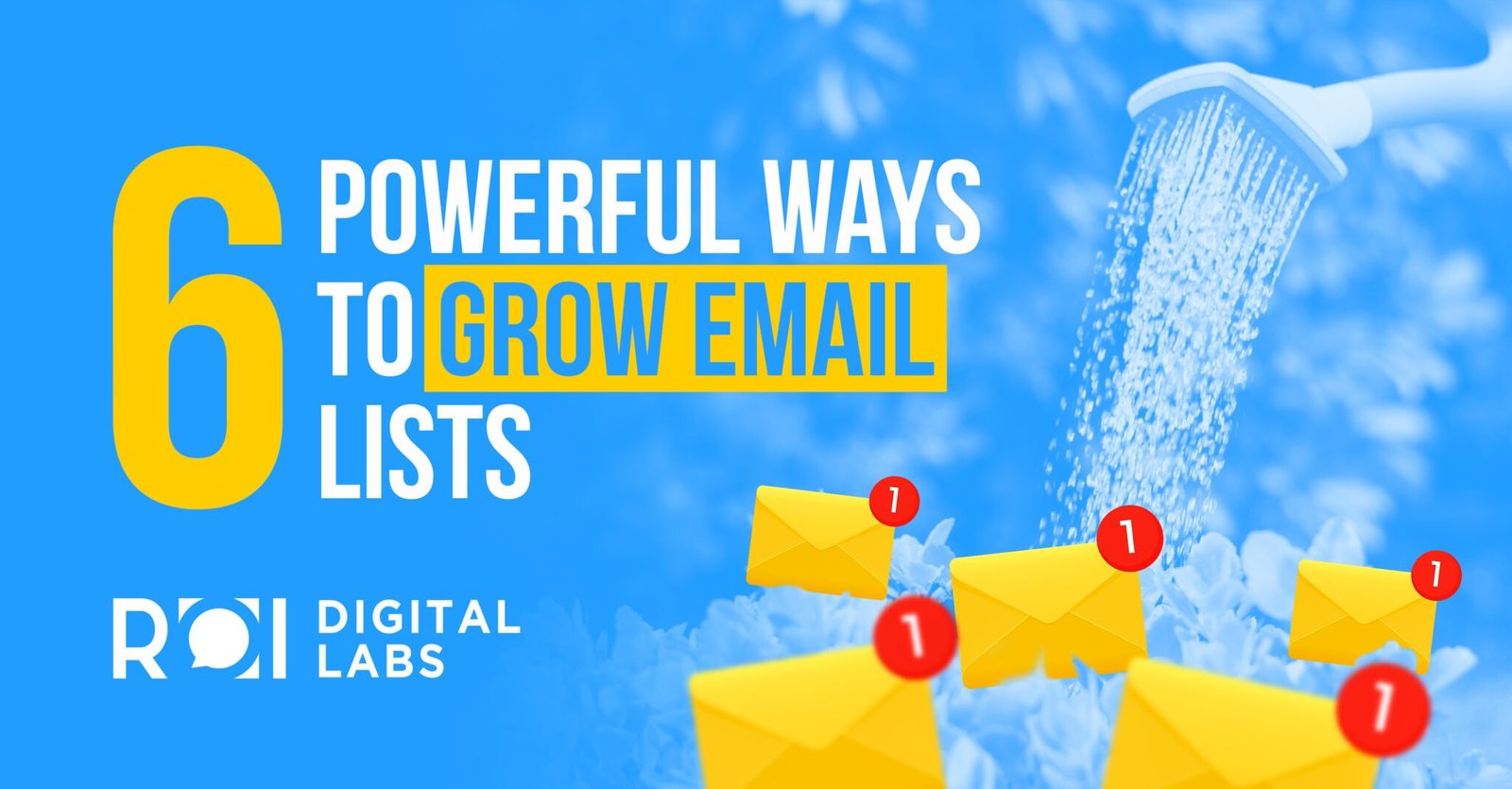Importance of Building an Email List: Key Steps for Success
In the digital age, where businesses and content creators are vying for attention across multiple platforms, the importance of building an email list cannot be overstated. An email list serves as a direct line of communication to your audience, bypassing the noise of social media algorithms and fostering meaningful relationships with potential customers. As we delve into this topic, we will explore the nuances of email lists, their benefits, and effective strategies for nurturing them, ultimately leading to business success.
Grasping the Golden Nugget of Email Lists!

Email marketing has evolved significantly over the years, transitioning from a fringe practice to a staple in digital marketing strategies. To understand why you should prioritize building an email list, it’s important to first define what constitutes an email list and consider its historical context.
Definition of an Email List

An email list is a collection of email addresses gathered from individuals who have expressed interest in receiving communications from you or your business. These emails are usually accompanied by permissions, as subscribers opt-in voluntarily, confirming their desire to engage with your brand.
Collecting email addresses can occur through various channels, including website sign-ups, online forms, social media campaigns, and events. The key point here is that these contacts are not just random; they represent individuals who wish to receive information, updates, promotions, or newsletters directly in their inboxes. This relationship is critical because it establishes trust and opens the door for future engagement.
Historical Context: The Evolution of Email Marketing

The birth of email marketing can be traced back to the late 1970s when the first email was sent. However, it wasn’t until the early 1990s that companies began using email as a marketing tool. Early techniques were rudimentary, often involving unsolicited bulk emails – which were met with skepticism and disdain.
As consumers became more knowledgeable about spam and privacy issues, regulations such as the CAN-SPAM Act of 2003 emerged, mandating transparency in email practices. These changes forced marketers to adopt ethical and consensual approaches to building their lists, thus emphasizing the importance of permission-based marketing – a trend that endures today.
Over the years, email marketing has adapted to technological advancements and consumer behavior, increasing personalization and automation capabilities. From simple text emails to sophisticated segmented campaigns, the evolution illustrates how vital email marketing is within the marketing landscape today.
Current Trends in Email Usage

Despite the rise of numerous communication platforms like social media and messaging apps, email remains one of the most widely used tools worldwide. In fact, as of 2023, billions of people use email regularly for personal and professional communication. This widespread usage indicates that email is still a trusted medium, making it an ideal channel for marketers to reach their audience.
Recent trends show a growing emphasis on personalization, with data-driven insights allowing brands to tailor messages to individual preferences. Additionally, mobile optimization is crucial, as many users access emails via smartphones. Marketers are also beginning to leverage AI and automation to optimize their campaigns, analyze user behavior, and create targeted content at scale.
The results? Higher engagement rates, increased customer loyalty, and improved conversions. This underscores the importance of building an email list, which allows businesses to capitalize on these trends and connect with audiences effectively.
Benefits of Building an Email List

The advantages of having a robust email list extend far beyond mere contact collection. They play a pivotal role in driving growth, enhancing customer relationships, and optimizing marketing efforts.
Direct Communication with Your Audience
Creating an email list empowers you to communicate directly with your audience. Unlike other platforms where visibility depends on algorithms, an email provides a guaranteed way to reach subscribers. When you send an email, it’s delivered straight to their inbox, ensuring they receive your message without filters or algorithmic barriers.
This direct communication fosters a sense of trust and connection. Subscribers are more likely to engage with your content when they know you’ve taken the time to reach out specifically to them. Sharing valuable information, updates, and offers becomes personalized rather than transactional, resulting in stronger relationships with your audience.
Moreover, email allows you to control the narrative around your brand. You can share your story, promote new products, gather feedback, and respond to inquiries – all within a curated space. By fostering open communication, you build a community that values and trusts your brand.
Increased Conversion Rates
One of the standout benefits of building an email list is the potential for increased conversion rates. Studies consistently show that email marketing drives higher ROI compared to other marketing channels. This is largely due to the targeted nature of email campaigns.
When individuals subscribe to your list, they have opted in because they’re interested in what you offer. This interest translates into a higher likelihood of conversion. Whether you’re promoting a product, offering a service, or driving traffic to your website, email subscribers are often more engaged and ready to take action.
Additionally, you can segment your email list based on various factors, such as demographics, purchase history, or preferences. This segmentation allows you to tailor your messages further, ensuring that subscribers receive relevant content that resonates with them. Targeted messaging increases the chances of converting leads into paying customers, illustrating the importance of a well-curated email list.
Cost-Effectiveness Compared to Other Marketing Channels
In a world where marketing budgets often face scrutiny, building an email list stands out for its cost-effectiveness. Email marketing platforms are relatively inexpensive and offer various pricing models suitable for businesses of all sizes. The low cost per reach makes email marketing accessible, allowing you to maximize your budget.
The beauty of email marketing lies in its ability to yield high returns with a minimal investment. Once your list is established, maintaining it requires limited resources. With careful planning and thoughtful content creation, you can continue to nurture your audience while keeping costs low. By contrast, paid advertising can eat up a significant portion of your budget without guaranteeing long-term engagement.
Furthermore, measuring the effectiveness of your email campaigns is straightforward. With metrics at your fingertips, you can track performance, identify areas for improvement, and adjust your approach accordingly. This data-driven decision-making ensures that your marketing efforts remain efficient and impactful.
Ownership and Control Over Your Contacts
Unlike social media platforms, where changes in algorithms or policies can impact your reach, owning your email list means you have complete control over your audience. You decide how to engage with your subscribers, what content to share, and when to roll out campaigns. This autonomy is invaluable in a fast-paced digital landscape where trends come and go.
Building an email list also protects against platform dependency. If you rely solely on social media, a change in platform policy could jeopardize your communication strategy. In contrast, an email list is yours to manage, providing stability and consistency in your marketing efforts. You can also integrate your email list with other tools and platforms, creating a seamless workflow that enhances your overall strategy.
Owning your contacts also means you can adapt your approach over time. As your business evolves, you can refine your messaging, experiment with new tactics, and pivot based on subscriber feedback without being constrained by external factors.
Strategies for Effectively Building an Email List

Building a successful email list requires intentionality and creativity. Here are several strategies that can help you attract subscribers and keep them engaged.
Creating Compelling Lead Magnets
Lead magnets are essential tools for enticing individuals to join your email list. A lead magnet is any piece of content or incentive offered for free in exchange for an email address. To be effective, your lead magnet must provide value to potential subscribers.
Consider creating downloadable resources, such as e-books, checklists, templates, or guides that cater to your target audience’s pain points. Webinars, exclusive discounts, free trials, or access to a members-only community also serve as excellent lead magnets. The more appealing and relevant your lead magnet, the more likely individuals are to want to sign up.
Ensure that your lead magnet is prominently featured on your website and promoted across your marketing channels. Highlight its value proposition, and make the sign-up process simple and clear. Once individuals receive their lead magnet, follow up with a welcome email to establish rapport and nurture the relationship from the outset.
Utilizing Social Media to Drive Sign-Ups

Social media platforms are powerful tools for building your email list. By leveraging your existing audience, you can encourage followers to subscribe to your email updates. Create engaging posts that promote your lead magnet, emphasizing the benefits of signing up.
Consider hosting contests or giveaways on your social media accounts, where participants must provide their email addresses to enter. This tactic creates excitement and incentivizes engagement while expanding your subscriber base.
Additionally, utilize Instagram Stories, Facebook Live, or Twitter polls to connect with your audience and promote your email list. Include direct links to your sign-up page and maintain an active presence on social media to foster relationships that can translate into email subscriptions.
Optimizing Website Landing Pages
Your website serves as a primary touchpoint for potential subscribers, making it essential to optimize landing pages for email sign-ups. Design a dedicated landing page focused solely on encouraging visitors to join your email list. Keep the layout clean and easy to navigate, minimizing distractions that could lead to drop-off.
Clearly articulate the benefits of subscribing and reinforce the value of your lead magnet. Use persuasive copy that addresses potential concerns, such as privacy issues or the frequency of emails. Consider adding testimonials or case studies that build credibility and reassure visitors.
A/B testing different headlines, layouts, and calls-to-action can help determine what resonates best with your audience. Regularly analyze performance metrics to refine your approach, ensuring maximum conversions.
Implementing Pop-Up Forms and Subscription Boxes
Pop-up forms and subscription boxes can significantly increase your email sign-up rate if executed thoughtfully. While pop-ups may frustrate some users if poorly timed, strategically placed forms can capture attention without being intrusive.
Consider implementing exit-intent pop-ups that trigger when a visitor is about to leave your site. This opportunity allows you to present an enticing offer right before they exit, increasing the chance of capturing their email address.
In addition to pop-ups, incorporate subscription boxes on your blog posts, product pages, and checkout processes to streamline the sign-up experience. Ensure these forms are visually appealing and clearly communicate the benefits of subscribing.
Best Practices for Maintaining a Healthy Email List

Once your email list is established, nurturing and maintaining it is crucial for long-term success. A healthy email list ensures higher engagement rates, better deliverability, and minimizes unsubscribes.
Regularly Cleaning Your Email List
Over time, people change email addresses, lose interest, or simply forget about their subscriptions. Regularly cleaning your email list ensures you’re engaging with active subscribers and helps improve your overall deliverability rates.
Implement a routine schedule for list maintenance, focusing on removing inactive subscribers who haven’t engaged with your emails over a set period. Before removing them entirely, consider sending re-engagement campaigns to revive interest. Offer incentives like exclusive content or special discounts to motivate dormant subscribers to reconnect.
Cleaning your list not only improves deliverability but also boosts your campaign metrics. A smaller, more engaged list is often more valuable than a larger, stagnant one.
Segmenting Your Audience for Targeted Campaigns
Segmenting your email list allows you to tailor your messaging and create targeted campaigns based on user behavior, preferences, or characteristics. By dividing your subscribers into specific groups, you ensure that each segment receives relevant content that resonates with their interests.
Segmentation can be based on factors such as demographics, purchase history, engagement levels, or location. For example, new subscribers might benefit from a welcome series introducing your brand, while loyal customers could receive exclusive promotions or updates.
Personalized email campaigns tend to achieve higher open and click-through rates than generic ones. This level of customization reinforces the importance of building an email list that reflects your audience’s unique preferences.
Engaging Subscribers with Valuable Content
To maintain an engaged email list, consistently provide subscribers with valuable content that meets their needs. Understand what your audience desires – whether that’s educational resources, industry news, or exclusive promotions and tailor your content accordingly.
Consider segmenting your content based on subscriber interests, allowing you to send tailored messages that resonate with each group. Engaging content not only keeps your audience interested but encourages them to share your emails with others, expanding your reach organically.
Additionally, monitor feedback from your subscribers. Encourage them to reply to your emails or participate in surveys, providing insights into their preferences and experiences. Use this data to continuously refine your approach and enhance subscriber satisfaction.
Establishing a Consistent Sending Schedule
Consistency is key when it comes to email marketing. Establishing a regular sending schedule helps set expectations for your subscribers and builds anticipation for your content. Whether you choose to send weekly updates or monthly newsletters, stick to your schedule as much as possible.
However, it’s important to strike a balance. While consistency is crucial, overloading your subscribers with too many emails can lead to fatigue and increased unsubscribes. Pay attention to engagement metrics, adjusting your frequency based on subscriber responses.
Experimenting with timing can also lead to insights. Analyze open rates based on different days and times to determine what works best for your audience. By establishing a consistent yet adaptable sending schedule, you can maintain engagement while respecting your subscribers’ preferences.
GoHighLevel streamlines building and managing email lists with its CRM and automation tools, crucial for 2024 success. It helps businesses capture, segment, and nurture leads through targeted campaigns. By tracking performance and personalizing communication, GoHighLevel allows businesses to grow a high-quality, engaged email list and optimize their marketing strategies for maximum impact.
Measuring the Success of Your Email List Efforts

It’s not enough to simply build an email list; you must also measure its effectiveness to ensure your efforts yield positive results. Continuous evaluation and adjustments are integral to optimizing your email marketing strategy.
Key Metrics to Track
Several key metrics provide valuable insights into the performance of your email campaigns. Start by monitoring open rates, click-through rates (CTR), and conversion rates to assess engagement levels. Open rates indicate how many subscribers are reading your emails, while CTR reveals how many are taking action.
Another important metric is the unsubscribe rate, which highlights whether your content is resonating with your audience. Aim to maintain a low unsubscribe rate by continually delivering value and relevance to your subscribers.
Tracking bounce rates – especially hard bounces – is also essential. High bounce rates may indicate invalid email addresses, which can negatively impact your sender reputation. Regularly cleaning your email list will assist in maintaining healthy bounce rates.
Analyzing Open and Click-Through Rates
Open rates gauge the effectiveness of your subject lines, while click-through rates reveal how compelling your content is. Both metrics shed light on subscriber behavior and preferences, helping you refine your approach.
If you notice a decline in open rates, consider experimenting with different subject lines or send times. You may also want to reevaluate your audience segmentation to ensure your messages align with subscriber interests.
For CTR analysis, examine which types of content generate the most clicks. Are product recommendations performing better than educational articles? Understanding these dynamics allows you to tailor future campaigns to drive engagement and conversions.
Adjusting Strategies Based on Performance Data
Email marketing is not a one-size-fits-all endeavor. Utilize the data collected from your campaigns to inform your strategies and make necessary adjustments. If certain approaches yield higher engagement, seek to replicate those successes.
Conversely, if you encounter persistent challenges – such as low open rates or high unsubscribe rates – take proactive measures to address them. Solicit feedback from your audience, experiment with different content formats, or refine your targeting strategies.
By analyzing performance data and remaining flexible in your approach, you can develop an iterative process that continually enhances your email marketing effectiveness. The importance of building an email list lies not only in its initial creation but also in the ongoing effort to cultivate and optimize it for sustained success.
Wrapping It Up!
Creating an email list is like planting a garden in the realm of marketing – it’s essential for growth! The significance of an email list goes way beyond just collecting names; it gives you a direct hotline to your fans, boosts their excitement, and helps you grow lifelong friendships with your audience.
When you grasp the magic of email lists, spot the zillions of perks they bring, and put into action clever strategies to grow and care for them, you’re setting your brand up for a win. In a wildly packed digital jungle, an email list offers you a sturdy base, keeps you in control, and lets you nurture real connections with your subscribers.
As you set off on your thrilling adventure of building and pampering your email list, keep in mind that triumph calls for regular effort, a sprinkle of creativity, and a dash of flexibility. Track how you’re doing, soak up lessons from your audience, and stay dedicated to bringing them goodies. After all, a flourishing email list will open the door to exciting growth, lively engagement, and lasting victory in the fast-paced universe of digital marketing!




